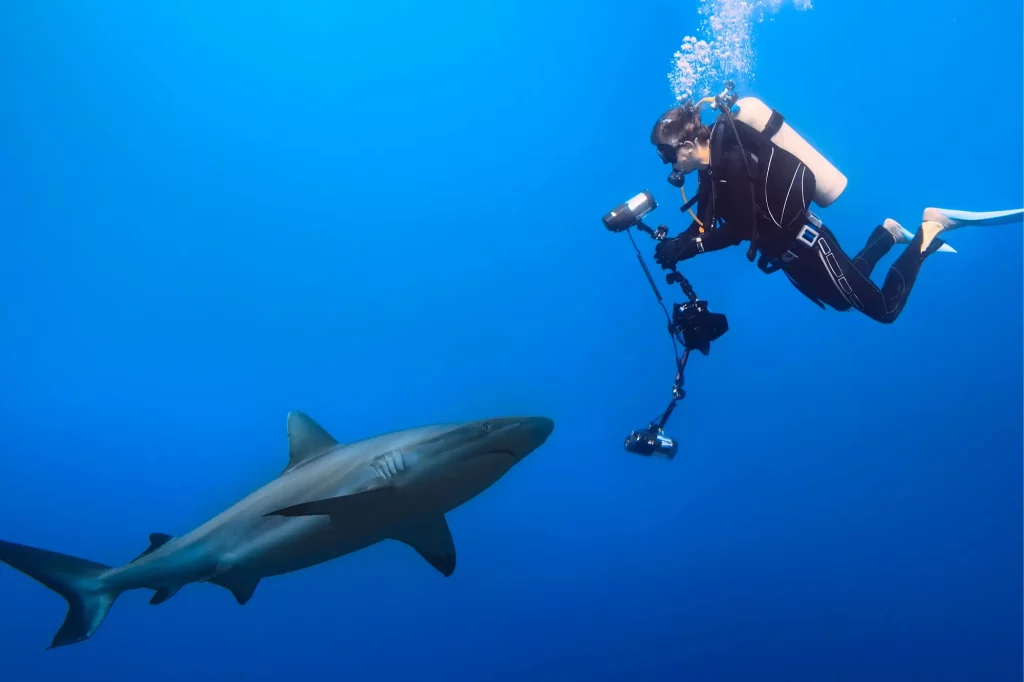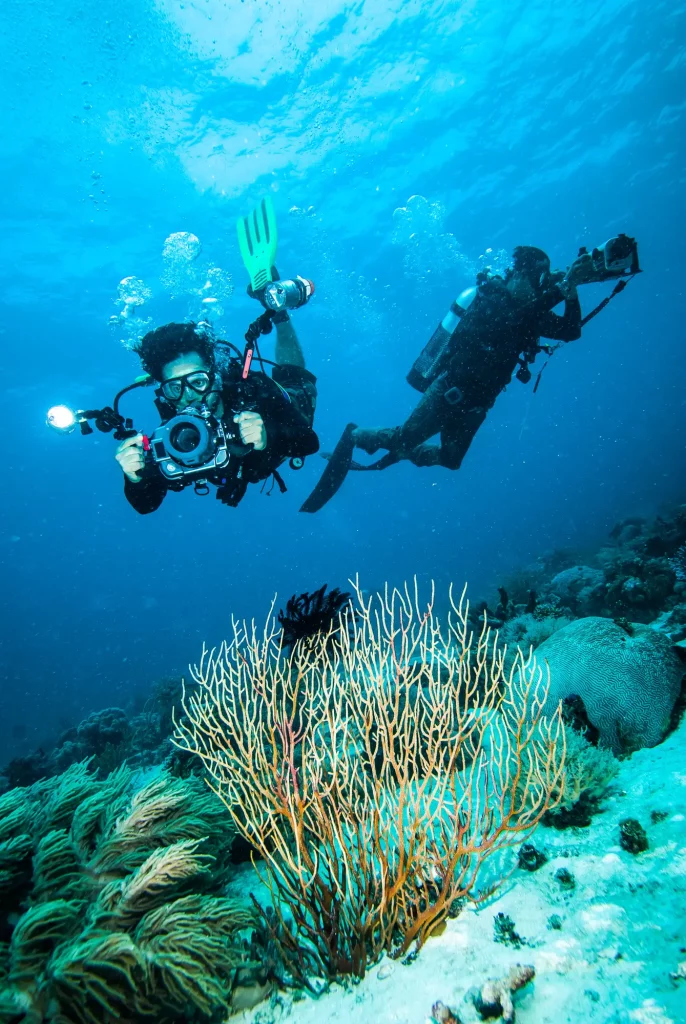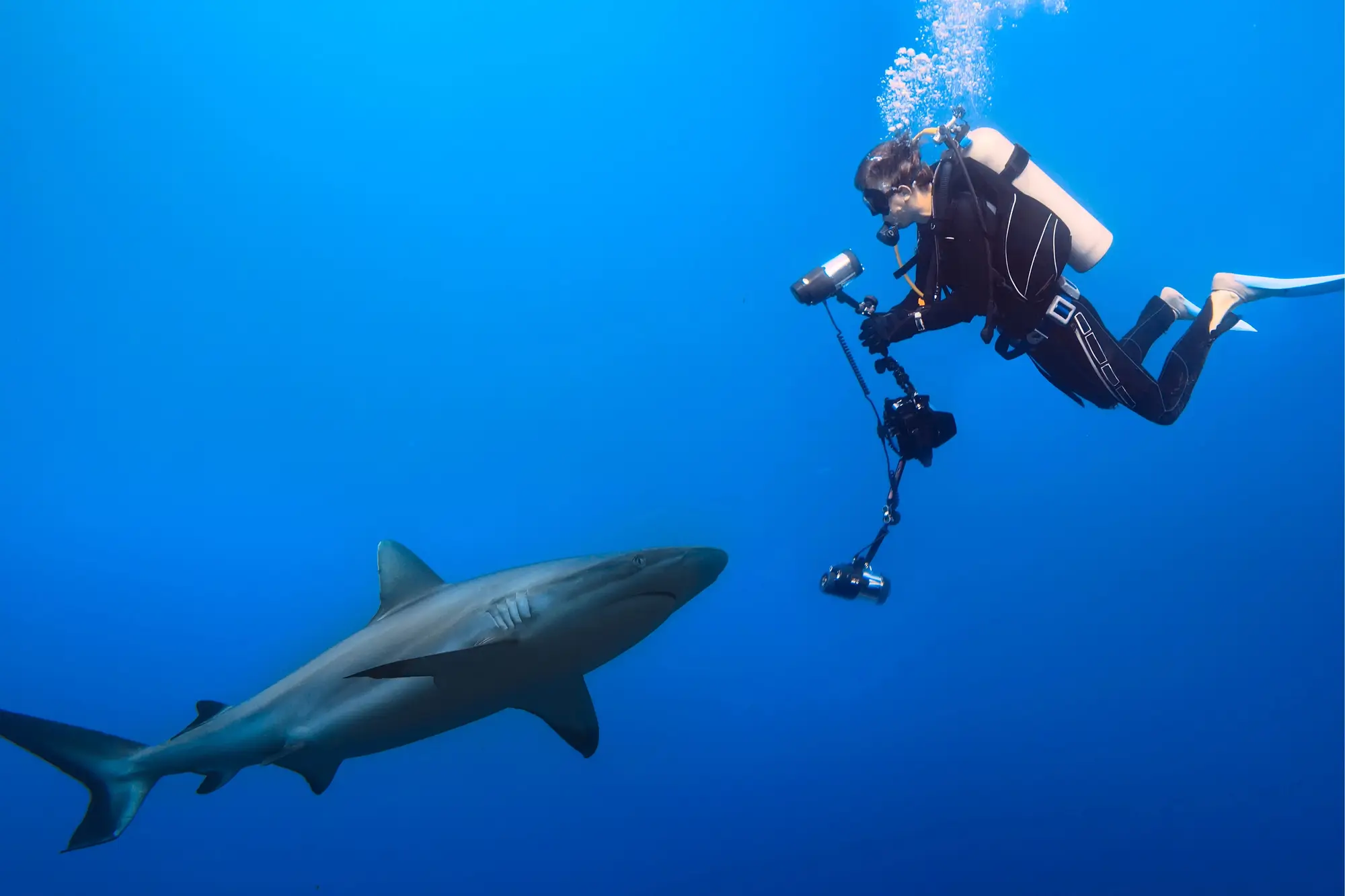
The ocean, covering more than 70% of our planet, is home to an incredible array of life, much of which remains a mystery. However, these vibrant ecosystems face unprecedented threats from human activities such as pollution, overfishing, and climate change.
In this context, photography emerges not just as an art form but as a powerful tool for conservation. By capturing the beauty and vulnerability of the ocean, photographers can inspire action, raise awareness, and drive positive environmental change.
The Role of Photography in Conservation
Photography acts as a visual bridge to the underwater world, offering a window into ecosystems that are often out of reach for the general public. Through visual storytelling, photographers create emotional connections that data and reports alone cannot achieve. By contrasting the beauty of untouched marine environments with the damage caused by human interference, photography effectively communicates the urgency of conservation efforts.
Renowned influential photographers contributing to conservation efforts include Paul Nicklen, known for his powerful images of polar environments and the impacts of climate change on ice-dependent species like polar bears and penguins. His work often emphasizes the delicate balance of these ecosystems and the rapid changes they are undergoing due to human actions.
Alex Mustard, another notable figure, uses his vibrant underwater photography to capture the intricate relationships within coral reefs, aiming to inspire both appreciation and action toward reef conservation.
David Doubilet, one of the most celebrated underwater photographers, has spent decades capturing the beauty and complexity of marine life, from coral reefs to remote oceanic species. His images often serve as visual records that not only document the biodiversity of marine environments but also highlight the pressing threats they face, such as overfishing and pollution.
Together, these photographers and many others contribute significantly to raising public awareness and advocating for stronger environmental protections through their evocative and informative imagery. Their photographs go beyond mere documentation; they serve as a call to action, urging viewers to recognize the urgency of preserving the natural world and the intricate life it sustains.
By doing so, they help to shift the conversation from passive observation to active participation in conservation efforts.
The Emotional and Psychological Power of Underwater Photography
The emotional impact of underwater photography lies in its ability to create a deep sense of empathy and urgency. Images of the ocean’s vibrant ecosystems, like the kaleidoscopic colors of coral reefs or the serene movement of sea turtles, evoke a connection that motivates viewers to act. This emotional response is a critical driver for conservation, as it moves individuals from awareness to action.
Moreover, underwater photography can inspire future generations of conservationists. By showcasing the beauty and complexity of marine life, these images encourage young people to pursue careers in marine biology, environmental science, and conservation. The inspiration drawn from these visual stories can lead to a lifelong commitment to protecting our oceans.

How Photography Helps the Environment
Photography’s power lies in its ability to raise awareness and influence public perception. Compelling images can transcend language barriers, evoking emotional responses that drive people to care about environmental issues. For instance, striking photographs of coral bleaching have brought global attention to the impacts of climate change on coral reefs, galvanizing support for protective measures.
Beyond awareness, photography can shape public policy and influence decision-makers. Visual evidence of environmental degradation often puts pressure on governments and organizations to take action. Photographs documenting illegal fishing practices or plastic pollution in remote marine areas have been used to lobby for stricter regulations and protective laws.
Photography also plays a crucial role in supporting scientific research. By capturing detailed images of species, behaviors, and habitats, photographers contribute valuable data that aids in monitoring changes and informing conservation strategies. Collaborations between photographers and scientists enrich research by providing visual records that can be used in scientific publications and advocacy campaigns.
Cristina Mittermeier’s Focus on Indigenous Communities and Ocean Conservation
Cristina Mittermeier, a marine biologist turned photographer, uses her imagery to highlight the symbiotic relationship between indigenous peoples and the ocean. Through her organization SeaLegacy, Mittermeier documents the sustainable fishing practices of communities that have lived harmoniously with marine ecosystems for centuries. Her work emphasizes the importance of protecting not just marine biodiversity but also the cultural heritage of these communities.
One notable project involved capturing the Inuit people’s traditional fishing methods in the Canadian Arctic. Her images contrasted their respectful, sustainable approach with the industrial overfishing that threatens many marine species. Mittermeier’s photographs have been instrumental in campaigns advocating for the rights of indigenous peoples and promoting conservation policies that include traditional practices. This approach not only preserves marine life but also supports the cultural integrity of communities that rely on these ecosystems.
Shawn Heinrichs and the Fight Against Shark Finning
Shawn Heinrichs is a conservation photographer and filmmaker who uses his lens to combat shark finning—a practice that involves slicing fins off sharks, often while they are still alive, and discarding the rest of the body. This inhumane practice has led to dramatic declines in shark populations, with some species facing the brink of extinction.
Heinrichs’ photography is instrumental in raising awareness and driving change. His dramatic images of finned sharks and their brutal treatment have been widely used in campaigns advocating for shark conservation. These visuals are not just meant to shock but to spur action—his work has contributed to the implementation of shark fin bans in various countries and has galvanized public support for broader marine protection initiatives.
The Ocean Image Bank
If you’re looking for inspiration, the Ocean Image Bank is a treasure trove of artistic and skilled photography that brings the wonders of the ocean to life.
The story of the Ocean Image Bank began with Richard Vevers, a former advertising executive turned passionate conservationist. Frustrated by the lack of awareness and action around ocean conservation, Vevers founded The Ocean Agency with a mission to harness the power of visual storytelling to spotlight the urgent issues facing our oceans.
It all started with Vevers’ groundbreaking project, the XL Catlin Seaview Survey, which used 360-degree underwater cameras to create an underwater “Google Street View.” This ambitious project allowed people worldwide to explore coral reefs from the comfort of their homes, sparking widespread interest and concern about the declining state of these ecosystems. Vevers’ work gained further recognition through the Netflix documentary “Chasing Coral,” which documented the third global coral bleaching event, highlighting the catastrophic impacts of climate change on coral reefs.
Building on these efforts, the Ocean Image Bank was launched as an officially endorsed project of the UN Ocean Decade, a global initiative aimed at rallying support for ocean science and conservation by 2030.
Today, the Image Bank stands as a free digital library filled with thousands of high-quality ocean photos and videos contributed by some of the world’s top underwater photographers. It serves not only as a visual resource but also as a call to action, making these compelling images accessible to educators, conservationists, and media professionals worldwide who want to use them in educational materials, campaigns, and advocacy work.
Among the photographers who donate their work are renowned names like Alex Mustard, Jayne Jenkins, and David Hannan, who are celebrated for their breathtaking underwater imagery.
Their photos capture everything from the vibrant colors of coral reefs to the delicate dance of marine creatures, reminding us of the ocean’s unparalleled beauty and fragility. Through their lens, the Ocean Image Bank doesn’t just document marine life; it tells a story of what we stand to lose—and inspires us to protect it. By making these images freely available, the Ocean Image Bank helps bridge the gap between scientific data and public engagement, turning abstract environmental issues into vivid, tangible experiences that can move people to care and act.
Today, the Ocean Image Bank continues to grow, empowering individuals and organizations to share the stories of our oceans with the world, fostering a deeper connection to the marine environment, and driving the action needed to preserve it for future generations. For those who wish to dive into this visual journey and contribute to the cause, the Ocean Image Bank offers an invaluable resource to support global ocean conservation efforts.
Practical Applications: How Photographers Can Contribute to Conservation
Photographers can contribute to ocean conservation by adopting ethical practices, such as minimizing their impact on wildlife and habitats. Engaging with conservation organizations and offering images for use in educational materials and campaigns is another way photographers can make a difference. By sharing their work on social media, in exhibitions, and through public talks, photographers can amplify their message and reach wider audiences.
Challenges and Ethical Considerations
While photography is a potent tool for conservation, it also presents challenges. Increased tourism to pristine locations, spurred by beautiful imagery, can lead to environmental degradation if not managed sustainably. Photographers must balance the desire to capture impactful images with the need to protect the environments they document. Adhering to ethical guidelines, such as avoiding interference with wildlife and respecting local regulations, ensures that photography supports, rather than harms, conservation efforts.
Final Thoughts
Photography is more than just an art form—it’s a powerful vehicle for ocean conservation. By capturing and sharing the beauty, diversity, and vulnerability of marine ecosystems, photographers can inspire change, influence policies, and foster a deeper appreciation for the natural world. As we face growing threats to our oceans, the role of photography in conservation is more important than ever. Through their lenses, photographers have the unique ability to connect people with the ocean and motivate them to take action in protecting it.
